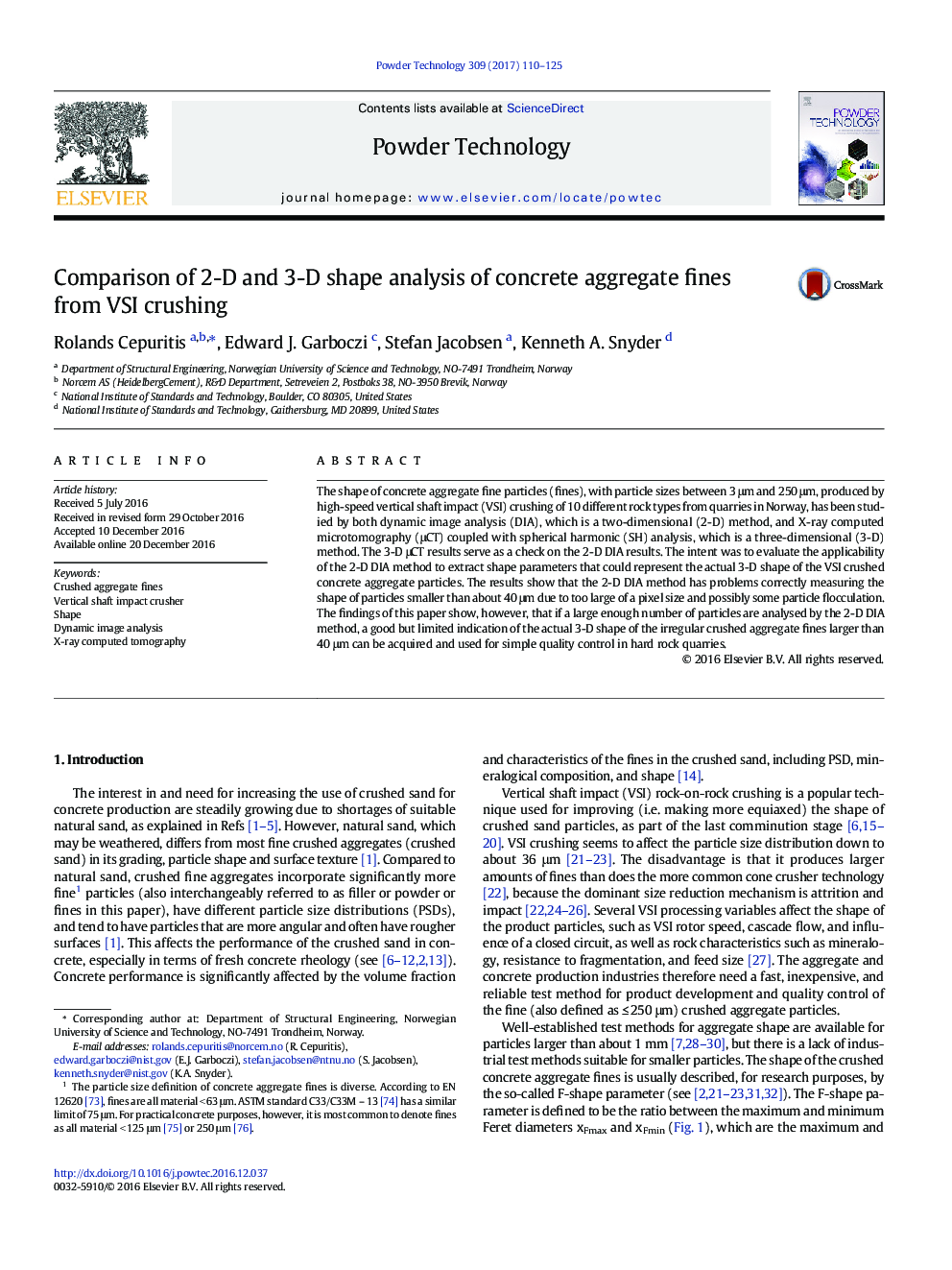| Article ID | Journal | Published Year | Pages | File Type |
|---|---|---|---|---|
| 4910743 | Powder Technology | 2017 | 16 Pages |
â¢The 2-D DIA method is unable to measure shape of particles smaller than 40 μm.â¢Main limitation of the 2-D DIA method is the pixel size and particle flocculation.â¢The 2-D DIA method shows satisfying results for particles larger than 40 μm.â¢The 2-D DIA method is applicable for simple quality control at hard rock quarries.
The shape of concrete aggregate fine particles (fines), with particle sizes between 3 μm and 250 μm, produced by high-speed vertical shaft impact (VSI) crushing of 10 different rock types from quarries in Norway, has been studied by both dynamic image analysis (DIA), which is a two-dimensional (2-D) method, and X-ray computed microtomography (μCT) coupled with spherical harmonic (SH) analysis, which is a three-dimensional (3-D) method. The 3-D μCT results serve as a check on the 2-D DIA results. The intent was to evaluate the applicability of the 2-D DIA method to extract shape parameters that could represent the actual 3-D shape of the VSI crushed concrete aggregate particles. The results show that the 2-D DIA method has problems correctly measuring the shape of particles smaller than about 40 μm due to too large of a pixel size and possibly some particle flocculation. The findings of this paper show, however, that if a large enough number of particles are analysed by the 2-D DIA method, a good but limited indication of the actual 3-D shape of the irregular crushed aggregate fines larger than 40 μm can be acquired and used for simple quality control in hard rock quarries.
Graphical abstractDownload high-res image (94KB)Download full-size image
